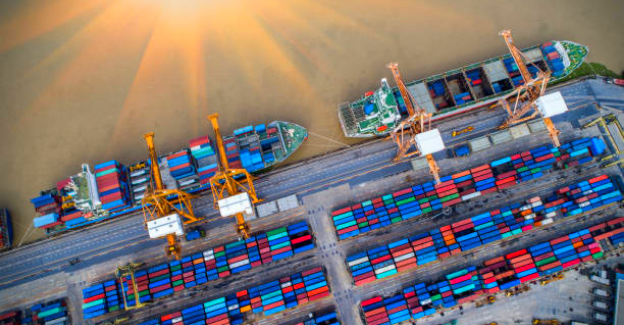How Supply Chain Flexibility Will Meet an Uncertain Future
COVID-19 not only wreaked havoc on public health, but it also began a cycle of disruption in sourcing and fulfillment that may never return to any semblance of “normal.” In fact, for both the short and long term, supply chain executives will need to focus on “flexible” in their job descriptions.
What Has Changed?
To answer the question, “what has changed,” it may be simpler to ask, “what has not?” because when it comes to supply chains, consumer demands and brand objectives have changed, probably forever. Start with the shift in direct-to-consumer grocery demands. Beginning in March in the grocery retail sector alone, online sales increased 100%. Online sales in the U.S. overall increased 25% on average for daily sales March 13 to 15 compared to the first two weeks of March. (source: Adobe Analytics).
By June, there was even more evidence of a potentially permanent change in consumer shopping behavior. According to the recently released FMI - The Food Industry Association’s annual U.S. Grocery Shopper Trends study - in terms of fulfillment, 18% of online grocery shoppers (including 8% of first-timers) are opting for same- or next-day delivery, compared to 16% (including 9% of first-timers) for curbside pickup and 14% (including 7% of first-timers) for in-store pickup. Seventeen percent (including 5% of first-timers) choose home delivery with standard shipping and 8% (including 4% of first-timers) subscribe for ongoing deliveries.
Have Supply Chains Adapted?
The short answer to whether supply chains have adapted to the new D2C model is not yet. Significant investment in technology and automation will be necessary to meet the direct to consumer movement. Automation to optimize supply chain operations will be the most efficient means to deliver a higher volume of packages to the end consumer.
As consumers moved online, shippers were challenged with getting products directly to the consumer, but they were also not prepared to break down pallets in the manufacturing and DC facilities. With 40% of essential items now being bought online, supply chains need to continue to evolve operations to accommodate much higher volumes in direct-to-consumer shipping.
What Have Supply Chains Done Right?
In the first weeks of the pandemic, bottlenecks appeared at nearly every point on the supply chain, which left supermarket shelves barren and deliveries delayed. The household items most in demand – masks, hand sanitizer, bleach cleaners and inexplicably toilet paper – were nowhere to be found. As speed to market increased, manufacturers, distribution centers and retailers quickly implemented temporary reconfigurations.
Now that it seems there will never be a total return to normal, supply chain executives need to face a new reality that will require constant change.
What Other Changes Are on the Horizon?
Decisions are being made by brand executives that will impact supply chains from manufacturing and distribution to store shelves and consumer pantries. Over the past 40 years, consumers have become accustomed to endless varieties of favorite staples – like the 400 kinds of Campbell soups. However, the number of selections in grocery categories and even within brands, are trending downward.
According to market-research firm Nielsen, in grocery stores, “the average number of different items sold was down 7.3% over the four weeks ended June 13. The variety in some categories such as baby care, bakery and meat, fell as much as 30% earlier in the pandemic.”
Changes are already evident. For example, IGA Inc. grocery stores now offer only four choices of toilet paper. A few months ago, the chain’s 1,100 U.S. stores typically carried about 40 varieties.
According to a recent article in the Wall Street Journal, executives at some of the most widely-known food giants have said they are trimming less-efficient and less-profitable products while shelving some in development. PepsiCo Inc., for example, stopped producing a fifth of its products during the Covid-19 crisis and in their Frito-Lay snacks business will have 3-5% fewer products going forward than it had pre-pandemic.
How Will Brand Decisions Impact the Supply Chain?
By discontinuing some less popular items that may be more complicated to produce, factories and distribution networks can become more efficient. There is also an open question as to whether consumers will even remain brand loyal or retain the grab-any-brand-you-can mindset from the pandemic.
In fact, shopping during the pandemic may demonstrate future upheavals that may compromise brand loyalty but will most likely streamline the supply chain.
Fulfillment and sourcing executives must create new strategies, revamp operations and change processes. The starting point will be to enable end-to-end inventory visibility, which will allow the supply chain – encompassing manufacturers, DCs and retailers – to quickly respond to the ebbs and flows of consumer demand without additional labor and resource allocation.
Can the Supply Chain Meet D2C Demands?
Again, there is a short answer to whether the supply chain can meet rising D2C consumer demands: yes, they can enable D2C with total visibility into inventory levels.
The first wave of the pandemic is instructive. If consumers had the visibility into inventory levels for essential products like hand sanitizer, masks and gloves, there would not have been panic buying and hoarding. The lack of total inventory visibility to both shippers and consumers during the pandemic was proved the absolute necessity of offering end-to-end visibility throughout the global supply chain.
Benefits of Automation
Automation is driven primarily by the digitization of goods. By giving products a unique digital identifier at the origin of the supply chain, full transparency of inventory at the product-level is possible. This is vital to meet a continued increase in direct-to-consumer expectations.
Digitization of goods through technologies such as RFID and barcode provides full transparency throughout every step of the supply chain that will offer seamless shifts in both B2B and D2C models.
Digitization of goods will also serve brands well as they continue to shrink product offerings. Flexibility to add and subtract items to meet production, distribution and sales goals may be an ongoing roller coaster. Historically, brand logic had focused on increasing sales by offering customers endless varieties of goods that would take up more and more retail and supermarket shelf space – especially in big box stores and warehouse clubs.
With the migration to online ordering, shelf space may become less important, while speed and accuracy ensured through automation and digitization will become more essential.
Getting - and Staying - Flexible
Agility must be incorporated into lean logistics. With the shrinking of the workforce, a consequence of reduced consumer spending during and post-pandemic, cost-cutting will mean smaller staffs. At the same time, increased direct to consumer demands will present labor challenges. Therefore, the reduction in workforce means the technology to automate processes will be required to meet the needs of manufacturers, retailers and distribution centers.
In a lean set up, operations are already set up to process inventory in order to maximize labor efficiency. However, that doesn’t allow shifts both up and down to meet changing market demand. Agility in supply chain operations is the key. Supply chains need to have the ability to adjust operations to meet fluctuating demands.
Adhering to the three A’s of agility, automation and adjustment will be key to successful D2C supply chains. A future that holds so much uncertainty will require fulfillment and sourcing executives to focus on flexibility.









